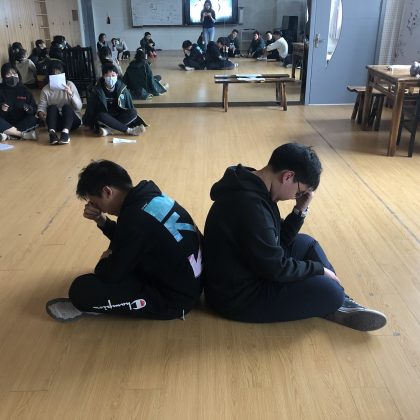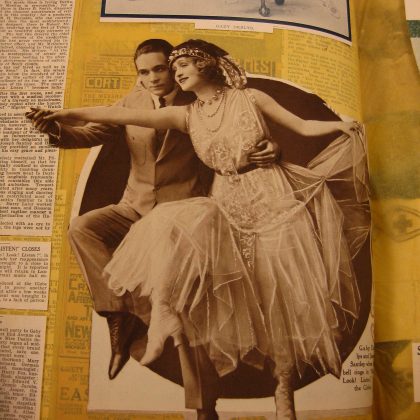What Does Performance Theory Take from Sociology?
We usually narrate the origin of performance studies by foregrounding idiosyncratic mid-20th-century thinkers—Erving Goffman, Kenneth Burke, and J.L. Austin, among others—who in different ways refurbished the old idea of the theatrum mundi. So powerful was the insight that social life resembles theatre that it was tempting to abolish the conceptual distinction that held them apart. In the 1960s and ’70s, with his mix of theatrical training, anthropological interests, and activist background, Richard Schechner was poised to recast this formula. Social reality only seemed to resemble Western drama because social life in general was organized around a panoply of repetitive symbolic actions and processes. Drama was just a subset of this pervasive mode of communication. When Schechner met Victor Turner, the cultural anthropologist who had coined the concept of “social drama” in his studies of conflict resolution among the Ndembu of Zambia, a new paradigm arose: socially consequential embodied culture in general could be understood as performance.
There is another way of accounting for this concept of performance, one less imbued with a romantic view of mid-century eclecticism and more attentive to intellectual lineages and sociological ideas. The story goes like this: Inspired by Émile Durkheim, some 20th-century British anthropologists adopted a set of analytical methods that sought to determine how social forms and practices contributed to the persistence of society as a whole. It proposed that societies were unified systems with interdependent internal forms akin to those of sophisticated organisms. This approach, called structural functionalism, was defined foremost by A.R. Radcliffe-Brown in the 1930s and formed the basis of a pervasive way of understanding the importance of culture in shoring up social order.
Structural functionalism informed Goffman’s analysis of face-to-face interactions (his advisor, W. Lloyd Warner, was Radcliffe-Brown’s protegé). It was also adopted by anthropologists who studied traditional societies, especially in parts of Africa under British colonial rule. But these analytical methods could only weakly explain social change, which was especially hard to ignore in those places. Turner’s advisor at the Manchester School, Max Gluckman, modified the functionalist approach by steering analysis away from static structure and toward processual, time-based forms. Gluckman also anticipated the anticolonial and Marxist materialist concerns of late 20th-century performance studies. From the Manchester approach, performance studies absorbed methods that examined social situations by decoding their audience-oriented symbolic displays and attending to the repetitive and dynamic aspects of social process.
One reason to credit this version of our intellectual history is that in Manchester School research we can see predecessors to performance research methods and ways of thinking. Gluckman examined embodied behavior in concrete social situations. His foundational essay, nicknamed “The Bridge” (1940–42), begins with a detailed description of a ceremonial bridge dedication near Mahlabatini, KwaZulu-Natal, South Africa, involving British administrators and Zulu leaders. It then offers a thorough sociographic analysis, showing that that “Zulus and Whites were involved in a single social system” marked by economic exploitation and the colonizers’ threat of force. These methods were also applied to other performance forms. In 1956, J.C. Mitchell, another Manchester anthropologist, published a study of Kalela, a popular tribal dance tradition in the Copperbelt of Southern Africa (today Zambia). Mitchell analyzed one particular Kalela dancing team in 1951 to illuminate class structure, tribal group distinctions, and prestige as it related to the “European way of life.” He noted that Kalela derived from an earlier form, Mbeni, which may have involved imitation of British military marches.
Taking the Durkheimian tradition in British anthropology seriously as a precursor to performance research reveals antecedents not only to our research methods (such as ethnography), but also to key concepts and insights. Radcliffe-Brown himself wrote of “cultural process” as a specific feature of social life that involves “the transmission of learnt ways of thinking, feeling, and acting.” This is not so far away from Diana Taylor’s insight that performance identifies as a repertoire of embodied knowledge. In a 1936 paper on mortuary customs of Bantu culture in Southern Africa, Gluckman refers to Radcliffe-Brown’s concept of the “social personality.” This is the “sum of characteristics” by which a person has affected social life and the social sentiments of others during their life—their definite position in society. A similar idea serves as a point of departure for Joseph Roach’s Cities of the Dead (1996). Roach writes of the “rites of memory” that attend similar departures in an academic unit: “into the professional and social places they once occupied step the anxious survivors […].” This introduces Roach’s examination of the “three-sided relationship of memory, performance, and substitution” in the circum-Atlantic world. Mitchell’s analysis of the Kalela dance proposes that the practice offers men of lower social standing a “vicarious participation” in the upper levels of African society.
Reconsidering the sociological ideas that made it possible to conceive of “performance” as a factor in social life requires us to consider our genealogical links to an era when social scientific knowledge and colonialism were inseparable. It also stands to refresh our thinking about a theoretical problem that remains vital to our identity as a field: the relationship between performance and systemic social change.





